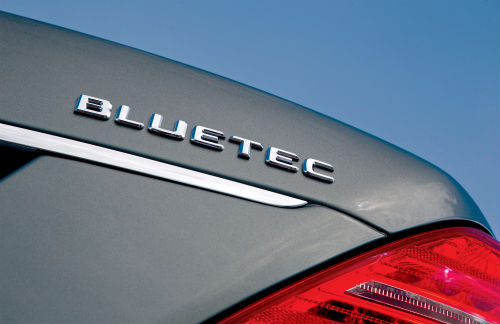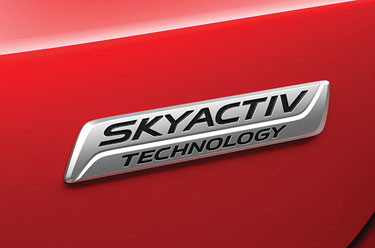Fueling Efficiency
The terminology automakers use to sell you their fuel-efficient cars is ever-more confusing. We attempt to sort it out.
 There’s a lot of pressure when buying a car. You’ve got the obvious choices: make, model, color, body style, whether there’s enough space for your friends and if there’s enough speakers to make the most of that Spotify playlist you’ve carefully cultivated. Increasingly, however, there’s one question everyone is forced to ask — how efficient is it? In a world of higher gas prices, greater levels of pollution and the impact climate change is having on our weather, reducing the amount of fumes your car belches out and the quantity of fuel it guzzles down is becoming ever more important.
There’s a lot of pressure when buying a car. You’ve got the obvious choices: make, model, color, body style, whether there’s enough space for your friends and if there’s enough speakers to make the most of that Spotify playlist you’ve carefully cultivated. Increasingly, however, there’s one question everyone is forced to ask — how efficient is it? In a world of higher gas prices, greater levels of pollution and the impact climate change is having on our weather, reducing the amount of fumes your car belches out and the quantity of fuel it guzzles down is becoming ever more important.
Part of the challenge is navigating the increasingly murky waters of terminology. Automakers love nothing more than attaching stylized logos to anything remotely green and efficient, and that only makes things more obnoxious for those of us looking for hard facts. Considering a Mercedes-Benz? Get a C-Class sedan with a BlueTEC engine. But wait, maybe you should consider one rated for BlueEFFICIENCY? Perhaps, then, you should also look at Volkswagen’s BlueMotion cars. Though now, do you go for TFSI or TDI? Then again, you could also head to Hyundai for a Blue Drive Sonata. Confused? It’s understandable. When did going green leave us feeling so blue?
In reality, it’s not as obtuse as it can seem — they are, after all, just monikers. For the average buyer, the main impediment is deciding just how you want to power your car; everything after that is merely cutting your way through a jungle of manufacturer nonsense.

For most buyers, their next auto is likely to have a gas engine at its heart. In terms of efficiency, manufacturers have had over a century to tweak and fiddle with the internal combustion engine, and that’s where the love for special names has come into play. Mazda’s SKYACTIV actually refers to several parts of a car’s manufacturing process — it’s all about lowering the weight of the car and boosting the efficiency of the engine. A lighter engine block, faster, lighter gearbox, lighter chassis, a braking system that captures energy lost when slowing down and returns it to the car’s battery and extensive tuning to eke out every bit of speed and power from a drop of fuel. It’s why the CX-5 crossover can get up to 35mpg highway.
Fiat brought their incredible MultiAir engines to America, which have now found a home in several Chrysler products, including Jeep and Dodge. It’s an example of using the engine alone to produce great efficiency. Fiat’s 1.4-liter MultiAir gas engine is a turbocharged unit that produces almost 170hp and 180 lb-ft of torque. That’s 170 horses from 47 fluid ounces of engine capacity. Volkswagen makes similar gains with its TFSI engines. These utilize a turbocharger and a pressure-injection system that feeds fuel straight into the combustion chamber of the engine, meaning as much fuel is burned as cleanly as possible. For drivers, that means better power and torque, more miles from a tank of gas and less emissions out the exhaust. Ford’s EcoBoost engines are similarly crafted — turbocharged and highly efficient, they can offer similar levels of power and torque to a larger engine while cutting emissions and boosting fuel economy.
With gas engines, the hardest part for many buyers is letting go of the ”Bigger is better” mentality. We love our rumbling V8s and throaty V6s. A small, 4-cylinder engine is a laughable ideal for many used to big cars with big engines — the problem is that they also come with big fuel bills and big emissions. What Fiat, Ford, Volkswagen, Mazda and many others are doing is offering a small engine that offers similar levels of power as a big V6 or V8, but with the fuel efficiency that comes with the smaller size. If, for your next car purchase, you want something fast and powerful but don’t want a bigger fuel bill, take a look at an EcoBoost V6 or a 2.0-liter TFSI — they may surprise you with how drivable they are, and will shock you with how much less they’ll need to be refilled at the gas pump.
Of course, there are plenty of other options for those seeking a cleaner, less fuel-hungry driving experience. You could, should you be brave enough, venture down the dark path of diesel ownership. I jest, but for many, diesels are still the black-cloud-belching, rattle-prone, wheezing monsters they were when they all but died out in the consumer market many years ago. However, where America rejected the diesel, Europe embraced it, turning the ugly-duckling into something of a swan — diesel models regularly outsell their gas counterparts on a continent where it’s not unheard of to pay $10 a gallon for fuel. Now, those same manufacturers are trying to get American consumers to welcome diesel back into the family — and it could be worth your while to consider it.
The advantage of a diesel can be split into two categories: they’re incredibly fuel-efficient and they’re much easier to drive. Diesels typically use 20-to-50 percent less fuel than a similarly-sized gas engine, while the abundance of torque means they’re perfect for pulling away from stoplights or passing cars on the highway. Jeep’s Grand Cherokee EcoDiesel uses a 3.0-liter V6 diesel, which will net up to 30mpg on the highway and run for 730 miles on a single tank of black stuff. It has 240 hp and 420 lb-ft of torque — more torque than the 5.7-liter Hemi V8 — and can tow up to 7,400 pounds.
Volkswagen and Audi, both part of the same group, use Clean Diesel technology to give their autos some of the best range of any non-hybrid models on the road. Clean Diesel engines produce lower CO2 emissions than 93 percent of cars on the road, while the Passat sedan nets 43mpg on the highway and almost 800 miles from a single tank of diesel. Audi estimates that someone driving their sporty A7 sedan 20,000 miles a year will save almost $3,000 in fuel costs over a standard three-year lease. If you’re considering a big sedan or SUV for your next purchase, a diesel engine could offset the initially higher cost with impressive fuel savings and easy power. It’s no coincidence that, when Dodge introduced its Ram truck with a V6 diesel, it sold out in just three days.
The future, at least in the mindset of a lot of buyers, lies not in more efficient gas or diesel engines, but in hybrids and pure-electric cars. Here, Toyota’s Prius is the undeserving king — a car that has thrived on a reputation that belies the utterly mediocre auto it actually is. Toyota claims up to 50mpg on the combined cycle is possible and real-world testing shows that many owners are achieving around 48mpg. That’s great. The Prius isn’t.
Ignoring personal issues with Toyota’s offering, hybrid engines are where most manufacturers tend to stick to an obvious naming convention: BMW ActiveHybrid, Mercedes’ Hybrid Drive or Toyota’s own Hybrid Synergy Drive. Hybrids themselves, though, are not born equal. In the market for a Ford Fusion with the hybrid option? Great, there’s a model named Fusion Hybrid. What, then, is the Fusion Energi? Well, that’s also a hybrid, with a gas engine and electric motor working together. Whereas the standard hybrid uses the electric motor to switch off the engine at stoplights, allow for electric-only operation when coasting on the highway or moving away from standstill and as a method to boost fuel economy, the Energi model is capable of operating for 21 miles without ever needing the gas engine. How does it compare? In city driving, the hybrid will net 47mpg. The Energi will get 102mpg. Travel less than 20 miles per day and plug the Energi in overnight and you could avoid using gas altogether until you venture out on a longer journey.
Chevy’s Volt also uses a gas engine and an electric motor. It’s not a hybrid, though, but rather a “range-extending vehicle.” What that means is that the engine never directly powers the wheels — instead, it’s used to charge the battery once the Volt’s 38 electric miles are exhausted. Total range? 380 miles, but of the over 600 million miles driven by Volt owners, 400 million of those have used the electric motor only. Again, plug it in at night and gas is a thing of the past.
Want to ditch gas altogether? Nissan’s Leaf will run for 84 miles on a single charge of electricity — though it has no gas engine to supplement that mileage should you need to go further. Tesla’s Model S sedan, which currently holds Consumer Reports highest-ever rating of 99/100, will travel for up to 300 miles on electricity alone.
All of this isn’t taking into consideration GM’s FlexFuel cars, which can run on gas mixed with ethanol; or fuel-cell vehicles, which are powered by liquid hydrogen; or CNG autos, which propel themselves with compress natural gas. These are all more limited offerings.
For consumers, there are a wealth of ways to pick something that will fit all of your needs and leave you feeling a little better about your impact on the world. If it’s gas, try going smaller — American manufacturers are learning from their international counterparts how to squeeze incredible amounts of power from smaller engines with reduced fuel usage. If you’re willing to try diesel, you’ll reap more usable power and a lower fuel bill — though it’s really most beneficial in large sedans, trucks and SUVs. If you don’t mind having a reduced range, hybrids, plug-in hybrids and electric-only cars are the next step in reducing our dependence on fossil fuels. Whatever you decide on, don’t fall for the jargon and names that manufacturers dress their cars up in. Just remember: for many, blue is the new green.
Support Metro Weekly’s Journalism
These are challenging times for news organizations. And yet it’s crucial we stay active and provide vital resources and information to both our local readers and the world. So won’t you please take a moment and consider supporting Metro Weekly with a membership? For as little as $5 a month, you can help ensure Metro Weekly magazine and MetroWeekly.com remain free, viable resources as we provide the best, most diverse, culturally-resonant LGBTQ coverage in both the D.C. region and around the world. Memberships come with exclusive perks and discounts, your own personal digital delivery of each week’s magazine (and an archive), access to our Member's Lounge when it launches this fall, and exclusive members-only items like Metro Weekly Membership Mugs and Tote Bags! Check out all our membership levels here and please join us today!






















